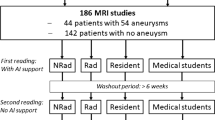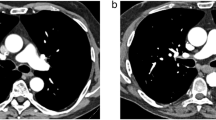Abstract
We investigated the reduction in patient radiation exposure dose during percutaneous coronary intervention (PCI) by stent enhancement processing. We examined the effects of dose reduction based on the image quality of stent enhancement processing using a purpose-built dynamic phantom. We evaluated the image contrast (IC) of the stent in stent-enhanced images (SVref), digital angiography (DA), and stent-enhanced images with a 20%, 40%, and 60% lower imaging doses (SV20, SV40, and SV60). We visually evaluated graininess and stent shape using the mean opinion score (MOS) and retrospectively evaluated the acquisition duration of stent enhancement in PCI cases; finally, we estimated the decrease in patient radiation exposure due to stent enhancement. The image contrast of SVref at phantom thicknesses of 20 cm was 51.25 ± 3.82, while the image contrast of DA was significantly reduced at 14.90 ± 1.57 (p < 0.05). We observed a significant decrease in the MOS of graininess in SV60 and MOS of stent shape in DA (p < 0.05). Furthermore, the average imaging duration for stent enhancement using PCI was 22.65 ± 7.43 s, and the maximum imaging duration was 68.07 s. We hypothesize that patient radiation exposure dose can be reduced by up to 60.17 mGy by lowering the imaging dose during the stent enhancement process. Stent enhancement processing improves the visibility of stent images, and can reduce radiation exposure by approximately 40% during confirmation imaging of stents. Our study contributes to the reduction of radiation exposure dose for operators and patients in PCI.







Similar content being viewed by others
References
Mettler FA, Bhargavan M, Faulkner K, Gilley DB, Gray JE, Ibbott GS, et al. Radiologic and nuclear medicine studies in the United States and worldwide: frequency, radiation dose, and comparison with other radiation sources—1950–2007. Radiology. 2009;253:520–31. https://doi.org/10.1148/radiol.2532082010.
Picano E, Vañó E, Rehani MM, Cuocolo A, Mont L, Bodi V, et al. The appropriate and justified use of medical radiation in cardiovascular imaging: a position document of the ESC associations of cardiovascular imaging, percutaneous cardiovascular interventions and electrophysiology. Eur Heart J. 2014;35:665–72. https://doi.org/10.1093/eurheartj/eht394.
Guesnier-Dopagne M, Boyer L, Pereira B, Guersen J, Motreff P, D’Incan M. Incidence of chronic radiodermatitis after fluoroscopically guided interventions: a retrospective study. J Vasc Interv Radiol. 2019;30:692–8. https://doi.org/10.1016/j.jvir.2019.01.010.
International Commission on Radiological Protection. Avoidance of radiation injuries from medical interventional procedures. Ann ICRP. 2000;2:85.
International Commission on Radiological Protection. The 2007 recommendations of the International Commission on Radiological Protection. Ann ICRP. 2007;103:2–4.
International Commission on Radiological Protection. Diagnostic reference levels in medical imaging. Ann ICRP. 2017;1:135.
Japan network for research and information on medical exposure. National Diagnostic Reference Levels in Japan (2020) Japan DRLs. 2020 http://www.radher.jp/J-RIME/report/DRL2020_Engver.pdf (accessed 5 May 2023)
Silva JD, Carrillo X, Salvatella N, Fernandez-Nofrerias E, Rodriguez-Leor O, Mauri J, et al. The utility of stent enhancement to guide percutaneous coronary intervention for bifurcation lesions. EuroIntervention. 2013;9:968–74. https://doi.org/10.4244/EIJV9I8A162.
Mutha V, Asrar Ul Haq M, Sharma N, den Hartog WF, van Gaal WJ. Usefulness of enhanced stent visualization imaging technique in simple and complex PCI cases. J Invas Cardiol. 2014;26:552–7.
Oh DJ, Choi CU, Kim S, Im SI, Na JO, Lim HE, et al. Effect of StentBoost imaging guided percutaneous coronary intervention on mid-term angiographic and clinical outcomes. Int J Cardiol. 2013;168:1479–84. https://doi.org/10.1016/j.ijcard.2012.12.051.
Tsutsui K, Miura Y, Sawada H, et al. Development of “dynamic StenView” cardiovascular treatment support software. Shimadzu Rev. 2011;72:23–7.
Gotoh K, Sakai T, Yamashita Y, et al. Development of guidance application for device placement. Shimadzu Rev. 2015;72:21–4.
International Electrotechnical Commission. Medical electrical equipment—part 2–43: particular requirements for the basic safety and essential performance of X-ray equipment for interventional procedures. London: IEC; 2010.
Kato H. Method of calculating the backscatter factor for diagnostic X-rays using the differential backscatter factor. Nippon Hoshasen Gijutsu Gakkai Zasshi. 2001;57:1503–10. https://doi.org/10.6009/jjrt.KJ00001357706.
Yanai H. Statcel—the useful addin forms on excel-4th. Saitama: OMS Publishing Inc; 2015.
Streijl RC, Winkler S, Hands DS. Mean opinion score (MOS) revisited: methods and applications, limitations and alternatives. Multimed Syst. 2016;22:213–27. https://doi.org/10.1007/s00530-014-0446-1.
Jin Z, Yang S, Jing L, Liu H. Impact of StentBoost subtract imaging on patient radiation exposure during percutaneous coronary intervention. Int J Cardiovasc Imaging. 2013;29:1207–13.
Bilal S, Lone A, Rashid A, Sultan AM, Rather H, Hafiz I, et al. Comparison of radiation exposure in patients undergoing single vessel PCI (requiring single stent) with and without clear stent and clear stent live technology. Ann Int Med Dent Res. 2019;5:14–7.
Acknowledgements
The authors would like to thank Editage (http://www.editage.com) for editing this manuscript for English language.
Author information
Authors and Affiliations
Corresponding author
Ethics declarations
Conflict of interest
The authors declare that they have no conflict of interest.
Ethical approval
All procedures performed in studies involving human participants were in accordance with the ethical standards of the Institutional Review Board (IRB) and with the 1964 Helsinki declaration and its later amendments or comparable ethical standards. This study was conducted as a retrospective, observational study and approved by the Institutional Review Board of Saiseikai Kawaguchi General Hospital (Approval Number: 2022–1) and Institutional Review Board of Tokyo Metropolitan University (Approval Number: 23003).
Informed consent
As a retrospective study, the institutional review board approval was obtained without patients’ informed consent.
Additional information
Publisher's Note
Springer Nature remains neutral with regard to jurisdictional claims in published maps and institutional affiliations.
About this article
Cite this article
Mori, K., Negishi, T., Makabe, K. et al. Patient radiation exposure dose reduction using stent-enhanced image processing in percutaneous coronary intervention. Radiol Phys Technol (2024). https://doi.org/10.1007/s12194-024-00796-9
Received:
Revised:
Accepted:
Published:
DOI: https://doi.org/10.1007/s12194-024-00796-9




